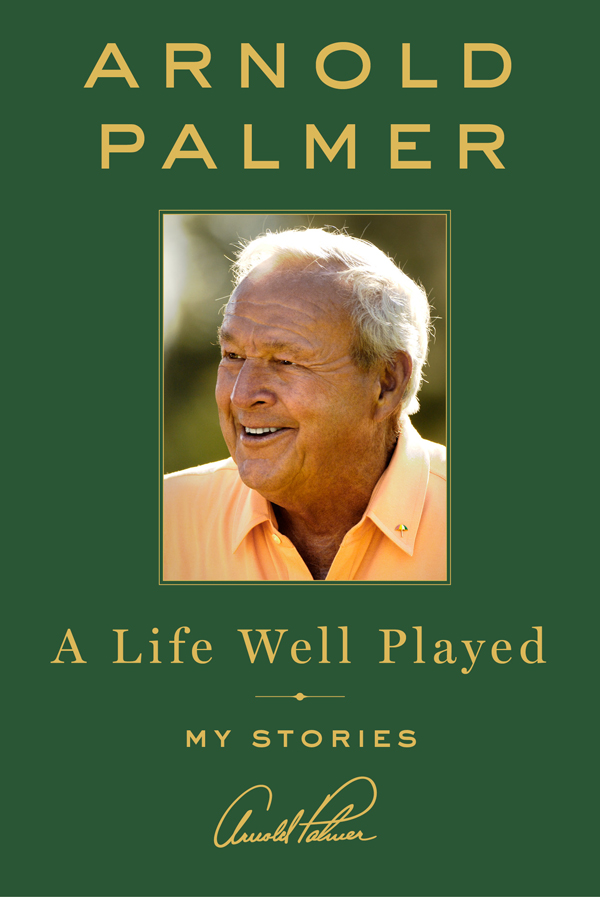
A Life Well Played
My Stories
کتاب های مرتبط
- اطلاعات
- نقد و بررسی
- دیدگاه کاربران
نقد و بررسی

August 8, 2016
Palmer is one of the greatest players in the history of professional golf, and his latest book offers a range of insights into his long career some of the “important things I learned along the way.” Covering everything from his early upbringing to his latest success on the Champions Circuit, Palmer delivers 75 short, breezily readable chapters divided into sections on golf (“A long drive is good for the ego”), life (“I have never forgiven Spiro Agnew for stealing my thunder on national television”), and business (“I’ve never told anyone this until now, but I still have a plan to build the ultimate golf course”). Throughout, Palmer displays the amiable persona that made him one of the golf stars of the television era; however, he does share disappointment at the way he was treated early in his career by the Wilson sports company, and he has some tough insights into Tiger Woods (“He would have benefited from a bit less intervention from the so-called ‘experts’ out there”). But many of his observations, while true, are too amiable and bland, the type to mostly appeal to fans (“You first must dream of doing things before you can do them”). Readers looking for more insight into Palmer would be better served by his earlier 2000 autobiography, A Golfer’s Life. Agent: Jay Mandel, WME.

One of the greatest golfers of all time offers up some stories and advice.Palmer (A Golfer's Life, 2000, etc.) is one of the best and best-loved of all golfers. The "King" (he admits he doesn't like this moniker) feels this slight book is particularly important to him. Now 86, he realizes there are things "I still wanted to say to my friends in golf and to fans of the game in general." The book is very conversational, as if he were right there talking to you. Packed with stories and a few tips, it's divided into three sections: Golf, Life, and Business. The chapters are short, some only a couple pages. Palmer begins with his "tough, taciturn disciplinarian" father, a greenskeeper (and later the pro) at the Latrobe Country Club in Pennsylvania. He showed a 3-year-old boy how to grip a club, stand, swing, and, most importantly, show good sportsmanship. Palmer adhered to most of this advice, especially the last one. He has always been gracious in defeat, and the fans--Arnie's Army, a phrase born in 1959--love him for it. He chides young pros who chicken scratch their signatures for fans; take your time and do it right, he says. He admits to being a "strong-minded person and maybe a bit stodgy." One of his "most favorite personal golf memories" was the day he shot 60 at Latrobe. He's made 20 aces and owns 2,000 putters and 10,000 clubs. The golfer he holds in the "highest esteem of all" is Byron Nelson, but the player he always wanted to beat--"to a pulp"--was Jack Nicklaus. Palmer's advisers were against him starting the Golf Channel. He said: "Let's do this." And that famous tea and lemonade drink? He "concocted it one afternoon with the help of my wife." A heartfelt, sincere, mini-self-portrait by a man who epitomizes class. COPYRIGHT(1) Kirkus Reviews, ALL RIGHTS RESERVED.

September 15, 2016
In reviewing his life, fortunes, and outlook on life, legendary golfer Palmer (b. 1929) creates a collection of new and previously published essays that echo his humble spirit. What comes through in these pages is a man who, though having success in golf and business, including cofounding Golf Channel, is genuine without artifice. Most chapters are but two or three pages in length. For the most part, there is little new material that has not been covered in one of Palmer's own books, or by one of his chroniclers (Michael Bamberger, John Feinstein, Thomas Hauser, et al.). A few of the chapters stand out, including one that explains the difference between hopes and dreams: "To hope is to wait for things to come to you. A dream is part of the process of setting goals and then striving to achieve them. You must first dream of doing things before you can do them." Notably, Palmer still has dreams even as he approaches his twilight. VERDICT This latest book gives wisdom into the wherewithal for Palmer's enduring popularity and is required reading for aspiring golf professionals.--Steven Silkunas, Fernandina Beach, FL
Copyright 2016 Library Journal, LLC Used with permission.

September 1, 2016
Palmer, who will be 87 on September 10, looks back on his legendary career as a professional golfer as well as his various entrepreneurial efforts over the decades, including his role in the founding of the Golf Channel, the improbably successful cable network devoted to 24-hour golf programming. Many of the golf stories here have been told many times, especially in Palmer's earlier autobiography, written with James Dodson, A Golfer's Life (1999), but for golf fans of a certain age, they bear retelling, both the tales of triumphs (the incredible comeback in the 1960 U.S. Open, the win that made Arnie's Army a household term), or those of equally stunning defeats (the blown seven-stroke lead on the back nine of the 1966 Open). Like so many champion golfers, Palmer's story is inextricably linked to a mentoring father: in Arnie's case, a greenskeeper and eventual club pro who first put Arnie's hands on a golf club and told him, Boy, don't you ever change that. Inevitably, this volume strikes a (hopefully premature) valedictory note, but that will make it all the more popular with the King's still-thriving army.HIGH-DEMAND BACKSTORY: A 150,000 first printing attests to the fact that, among the right demographic, a book by Arnold Palmer will always be news.(Reprinted with permission of Booklist, copyright 2016, American Library Association.)

























دیدگاه کاربران